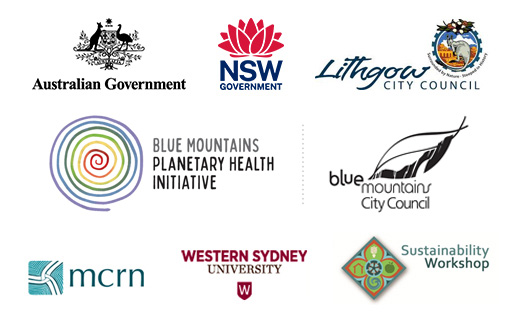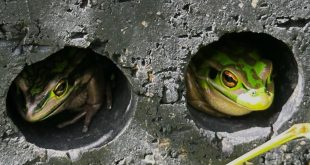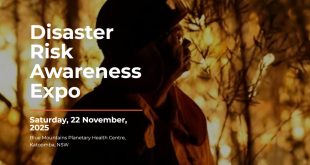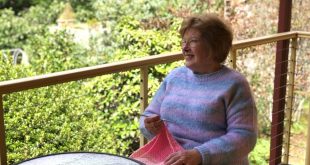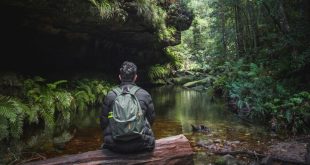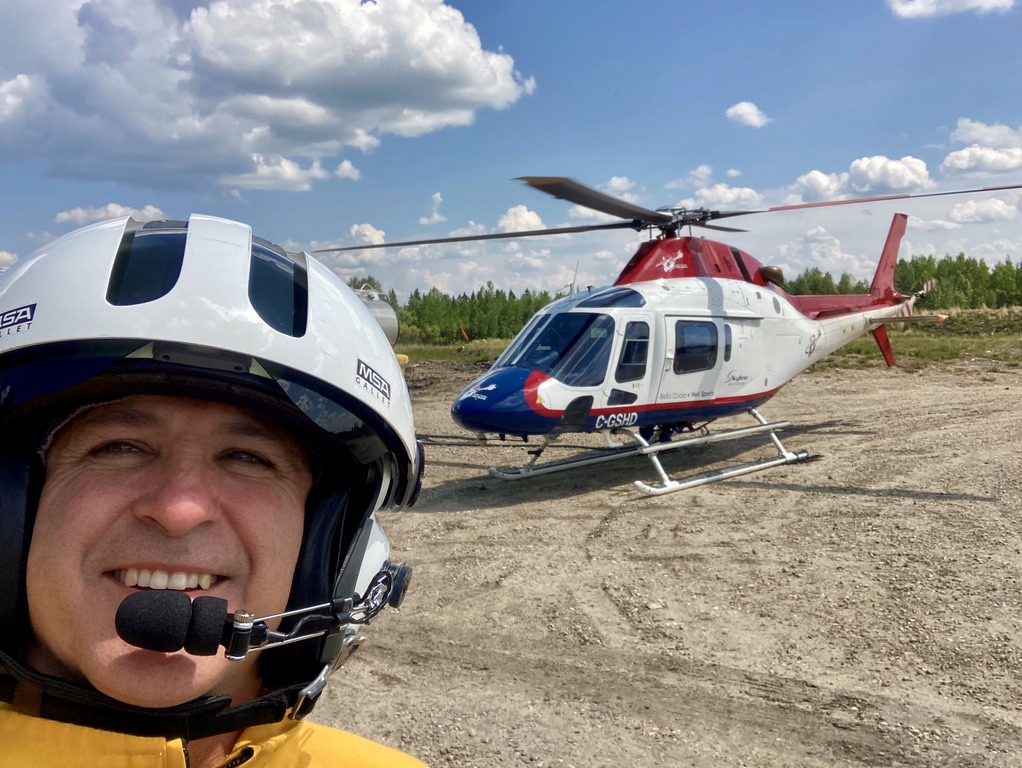
NSW Rural Fire Service (RFS) Air Attack Supervisor Rod Walker landing at the Pembina Fire, Alberta, Canada in mid-2023 (Rod Walker).
Aerial firefighting is proving to be a game changer in tackling bushfires. Since the 2019-20 Black Summer bushfires, the NSW Rural Fire Service’s fleet of helicopters and fixed-wing planes has grown from 4 to 11. Warrimoo local Rod Walker is an Air Attack Supervisor who flies through smoke-filled skies to help keep our communities safe.
Key Points:
- In a rapidly developing wildfire, you may have 5 to 10 or more aircraft tasked to a large developing incident.
- The RFS is always looking for more volunteers. There are many different roles firefighters can move into after specialised training. (See ‘Take Action’ at the end of this story.)
Share this article:
In the helicopter cockpit next to the pilot, Rod Walker is sweltering in his flight suit and helmet. Radio chatter has been coming through his headphones all day as he coordinates up to 10 firebombing and tactical aircraft over many hours.
Empty water bottles are strewn near his feet as Rod identifies aircraft hazards, studies the terrain and locates water sources. He is not only coordinating his aircraft and monitoring the safety of firefighting crews on the ground, he is keeping a close eye on the advancing wildfire. He’s also looking for properties that may come under threat and determining the most effective and safest firebombing strategy for his aircraft to undertake.
An Air Attack Supervisor is a challenging role that Rod has thrived on for more than 10 years – both as an RFS staff member and a local RFS volunteer. He shares his expertise in the Blue Mountains, across NSW, interstate and overseas.
Rod:
A lot of people think an Air Attack Supervisor is a glorified role. You’re up there flying around all day in a plane or helicopter, how cruisy is that? However, it can be an extremely busy and dynamic role. Most aircraft are not air-conditioned, and the front seat is very tight, with very little leg room. You just have your knee board and an iPad on your lap. Coordinating firebombing aircraft in an Air Attack role often occurs on the worst days for a bushfire to occur – usually very windy, very turbulent and very hot.
In a rapidly developing wildfire, you may have 5 to 10 or more aircraft tasked to a large developing incident. The fire can move quickly, producing large columns of smoke. It can be spotting ahead of itself and there can be people’s homes or whole communities coming directly under threat.
So why do you enjoy it?
I love flying and being up in an aircraft. My father used to fly gliders and from an early age I gained an appreciation of flying. I have a strong background in operational fire management over 25 years, so I have natural skills in those areas that I enjoy implementing from the cockpit.
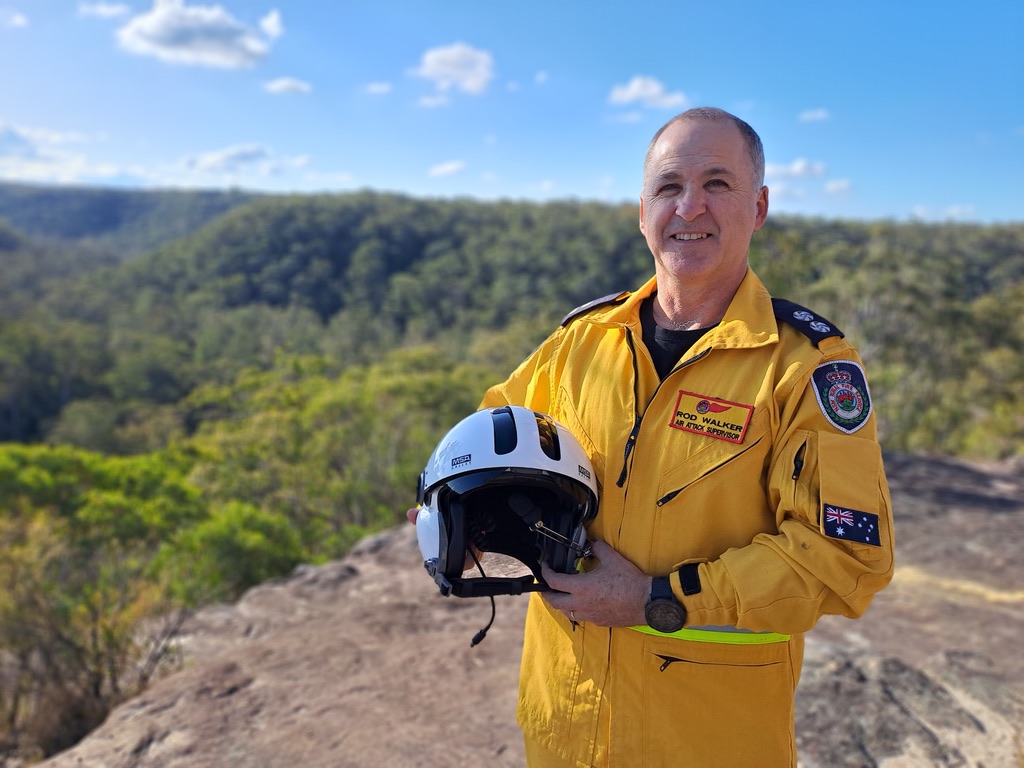
Rod at a lookout near his Warrimoo home. Rod wears multiple RFS hats. He is a volunteer member of his local Warrimoo Bushfire Brigade, an Air Attack Supervisor, and he fulfils the staff role as a Fire Behaviour Analyst and Planning Officer for Greater Sydney (Julie Nance).
What is your main job as an Air Attack Supervisor?
I’m responsible for the safe, efficient and effective coordination of the firebombing and tactical aircraft to meet the objectives of the Incident Action Plan (IAP). My number one priority is always the protection of life first, then property and the environment.
Maintaining good situational awareness is the key. I set up flight circuits for the firebombing aircraft so that every aircraft works smoothly and efficiently but more importantly, safely.
On some fires we use helicopters or small fixed wing planes to assist putting out those fires but at other times you might use a large air tanker called a LAT, like the RFS 737 or a C130 Hercules. If LATs are in use, I then undertake the Air Attack role in a fixed wing plane called a Birddog.

A large air tanker dropping retardant on the Alpha Rd fire, Mudgee, March 2023 (Rod Walker).
I assume being in the air is critical to providing an overview of what’s happening on the fireground?
I can position myself up there and see things that the ground crews can’t always see through the trees or through the topography, terrain or smoke. I can see if a spot fire has started or if a containment line has been breached. I might also discuss the tactics of the Incident Action Plan with the Divisional Commander and provide advice. I monitor up to four radios at once, to not only talk to my aircraft but also to liaise with the ground crew and the Incident Controller.
It must be challenging juggling the coordinating role with your other obligations.
Yes. I’m not just managing the aerial firebombing operations, I am also identifying hazards before aircraft get on scene, for example, where powerlines may be crossing the valley floor. I need to make sure the firebombing aircraft don’t fly into those powerlines in the smoke and crash. I’m also identifying water points where the helicopters can come down, hover and refill over a dam, creek, river or even someone’s swimming pool, if it’s really urgent.
I am also watching out for changing weather conditions and any incoming storms, lightning or wind changes that may affect not only the aircraft’s capability, but also the safety of the firefighting crews. I will also be pre-empting where the fire may be in the next 4, 8 or even 24 hours and providing that advice to the Incident Controller to adjust any firefighting operations, specific tactics or the mission objectives.
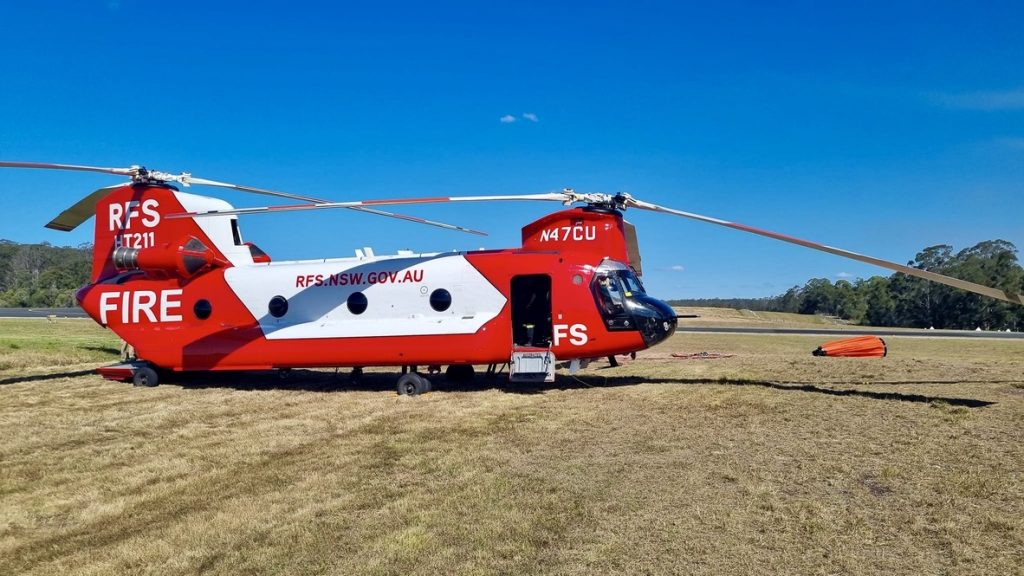
Above and below: the $9 million CH-47 Chinook, added to the RFS-owned aerial fleet in July 2023. The waterbombing aircraft carries up to 11,000L of water or retardant and allows for aerial firefighting at night (supplied).
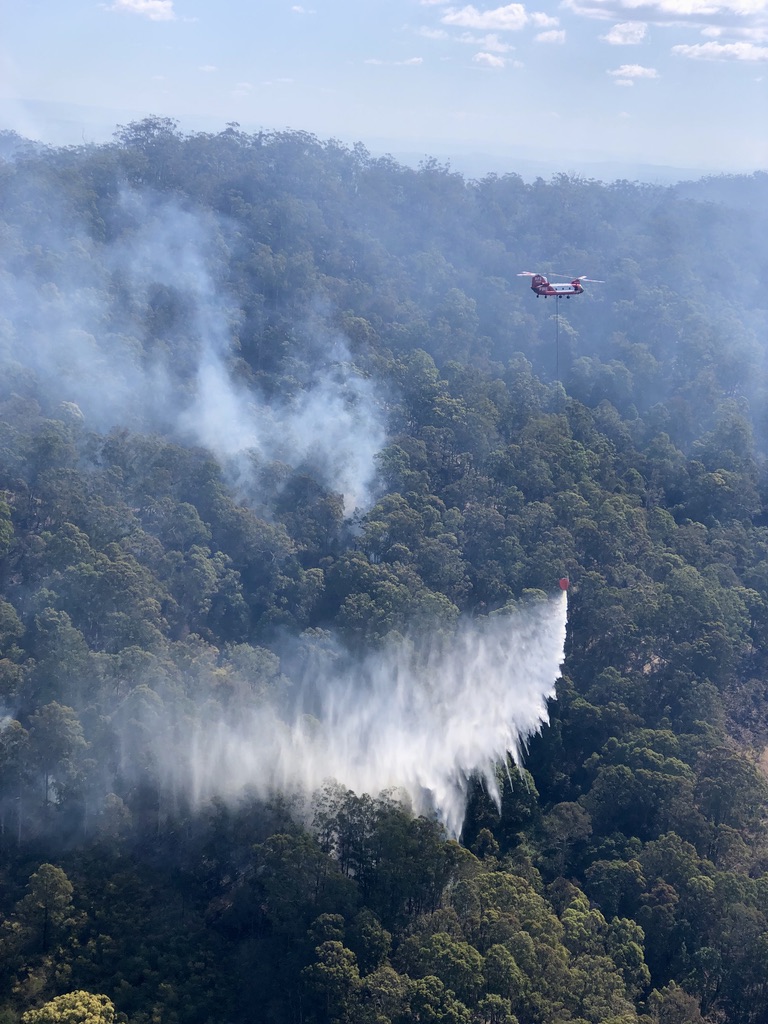
Do you have waterbombing capability on board your aircraft?
No. However, if I’m in a helicopter, I can certainly land and talk to people on the ground including farmers and landowners if a fire is coming towards their property.
I may need to advise them how to evacuate out of the area or if it’s absolutely urgent or life threatening, I may land and rescue people and relocate them to a safe area. I can also land to talk to our firefighters if I need to get an urgent message to them or if I think they may be in danger.
Sometimes farm animals may be trapped in the path of an approaching fire and in these situations you may need to land and cut a fence to let stock out if they are being imminently threatened.
Your job must be stressful at times and exhausting, particularly during long fire campaigns?
There can be long, very hot, and sometimes uncomfortable days sitting in the front seat of the helicopter or plane. When fire activity is high or extreme and the fire may be out of control and threatening homes, there aren’t any real breaks or down time. You put down, refuel, grab a quick sandwich – if you have one – and a drink, and then you’re back up there again.
It must be satisfying making a difference.
It is, but helicopters and aircraft don’t put fires out, it’s the ground crews including the remote area fire teams (RAFT Crews) who put them out. The aircraft can certainly knock some of those active edges out and support the ground crews. They do some wonderful things with property protection but at the end of the day, it’s always the firefighters on the ground that go in and put the smouldering logs, embers and the fire out.
Aerial firefighting certainly assists with that significantly, and I really love the fact that I can help with that, but it is the ground crews and our wonderful, hardworking RFS volunteers who really make the biggest effort. They are the backbone and the true heroes of any firefighting operation.
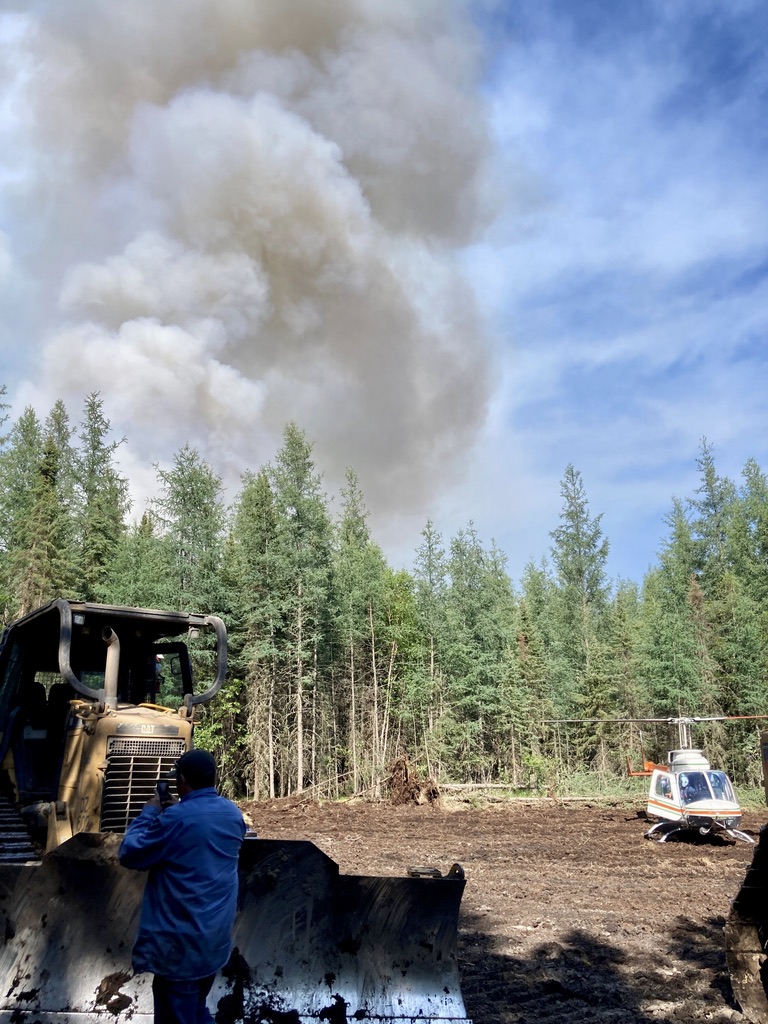
Rod has landed to check the bulldozer crews are safe from the approaching Deep Creek fire in Alberta, Canada, June 2023 (Rod Walker).
Take Action:
- Find out how to become an RFS volunteer. There’s a wide choice of fields you can train in after you have qualified as a basic firefighting member including remote area firefighting, aviation, community education, catering and communications. You can also contact your local Brigade.
- Explore paid careers in the RFS.
- Read a two-part series on Bushfire Resilient Design – Home and Garden:
Part one: Building for Bushfire
Part Two: Living with Bushfire Risk: Landscape and Garden Design
Share this article:
This story has been produced as part of a Bioregional Collaboration for Planetary Health and is supported by the Disaster Risk Reduction Fund (DRRF). The DRRF is jointly funded by the Australian and New South Wales governments.
